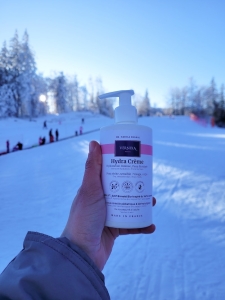Reading Time: mins
In recent decades, we have witnessed significant revolutions in skin care treatments, with particular growth around non-invasive technologies. Among these, photobiomodulation (PBM) uses LED technology to offer a range of solutions to various skin problems, without the need for surgical procedures. In a world where aesthetics are highly valued, this method offers a promising solution for skin repair and regeneration.
Photobiomodulation, often abbreviated to PBM, is a skincare technique that uses light-emitting diodes (LEDs) to induce beneficial biochemical reactions within skin cells. This treatment stimulates the mitochondria, essential for cell energy production, promoting the synthesis of Adenosine Triphosphate (ATP). ATP is crucial for cell renewal, tissue healing and combating the signs of aging.
The different wavelengths of LED light affect the skin in different ways:
Thanks to its ability to adapt to the specific needs of each skin type, PBM makes it possible to personalize treatments, an advantage often lacking in other skin therapies.
In addition to stimulating natural cellular repair, PBM also improves skin elasticity, hydration and overall texture. It reduces inflammation, accelerates healing, and is particularly beneficial in managing inflammation and oxidative stress, making it a preferred solution for sensitive skin or skin disorders.
Although MBP offers many advantages, it does have its limitations. Individuals with a history of skin cancer or pregnant women should consult healthcare professionals before using this technology. A sensation of heat may be felt during and after treatment, but this is generally transient and harmless.
All Rights Reserved | Tous Droits Réservés GTIN Compliance Hydra Lavant | GTIN Compliance Hydra Crème



